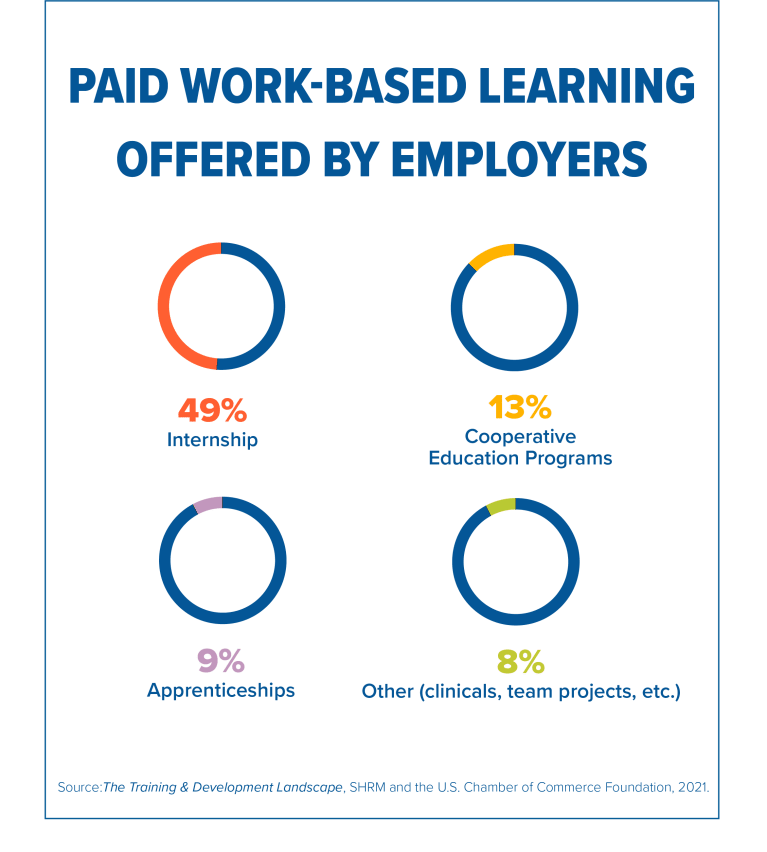
Employers are more likely to train new or newly promoted employees than to upskill current employees, according to recent research from the Society for Human Resource Management (SHRM) and the U.S. Chamber of Commerce Foundation.
Often the training brings new workers up to speed in their new industry. Some industries are required to offer this kind of training—61 percent of those in health care and social assistance said they must do so for certain jobs—but return on investment is the main reason employers see the value in skill-based training.
A medium-size employer in the construction industry, for example, told researchers that the technical industry expertise required for the work it does makes it hard finding people with the right skill set, so it is creating its own internal training academy to prepare employees for key positions within the company.
HR professionals also said skill-based training directly addresses skills gaps (62 percent) and changing business needs (59 percent), and it improves employee retention (58 percent).
"Employers are recognizing the clear positive impact that skill-based training can bring to both their workforces and the bottom line," said SHRM researcher Kerri Nelson.
"From leveraging this training to build an internal talent pipeline to allowing businesses to flexibly adapt to changing business needs, employers in our survey show that innovating may not be as difficult as most people may think. Investing in these areas now might help organizations save on costs in the long run."
[Related SHRM article: Report: Employers Turn to Partnerships to Develop Employees' Skills]
And many organizations are earmarking money for skill-based training in 2021: 60 percent of respondents said their organization will leave their budget untouched, and 20 percent plan to increase it. Only 6 percent are decreasing the funds. The remainder didn't have a training budget and do not have one in 2021.
Other findings from the report, The Training & Development Landscape: Exploring Employer Investment, Challenges and Innovation in Talent Development:
- 94 percent of organizations offer some form of skill-based training, but only 31 percent offer all four types discussed in the survey: initial skill training, job-maintenance training, employee development and upskilling.
- 73 percent said their employer provides job shadowing, job rotation and similar training to prepare employees to perform their current job. This initial training tends to be aimed at newly hired employees and those promoted or transferred to different roles.
- 66 percent offer job-maintenance training, such as teaching employees about new products and services or new technology the organization is introducing.
- 65 percent offer formal mentoring, coaching, leadership and professional development programs to enhance career-related skills.
- 52 percent provide upskilling such as certification programs, apprenticeships, educational courses and cross-functional training.
[SHRM members-only how-to-guide: How to Address the Skills Gap]
Paid Work-Based Training
When they are used, they tend to be favored by certain industries. Apprenticeships are more likely found in construction, utilities, agriculture and mining, where they often are used as a recruitment tool. Only 9 percent of employers said they offer apprenticeships.

Other key findings:
- 41 percent of respondents said they don't have the budget for paid work-based training.
- 32 percent said they didn't have the time to implement paid work-based training.